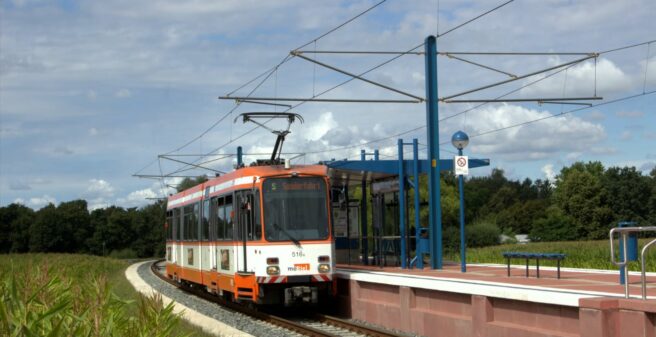
In the mid-1970s, the public transport operators in Essen, Mülheim an der Ruhr, Bochum and Bielefeld developed the type M light rail vehicle together with the tramway manufacturer DUEWAG (Düsseldorfer Waggonfabrik). Later, this vehicle type was also used in other cities. These were Nuremberg (standard-gauge type N cars, 1976), Dortmund (type N cars, from 1978), Kassel (type N cars, from 1981), Krefeld (from 1981), Mainz (1984) Augsburg (1985) and Heidelberg (1985). The last vehicles of this type can now only be found in Heidelberg, Kassel (rarely as replacement vehicles), Krefeld and Mainz. Numerous vehicles found a second life in Poland (here mostly modernised and equipped with low-floor centre sections) and Romania.
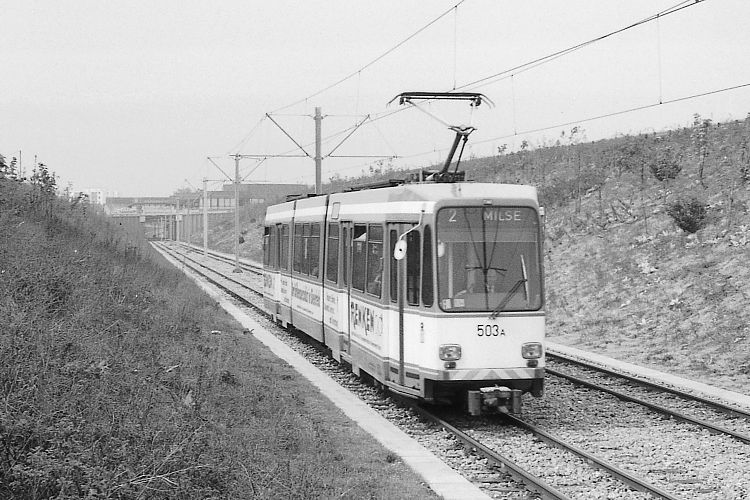
The M/N light rail model has proven to be very reliable and easy to maintain. In total, 326 six and eight-axle type M and N trams have been produced between 1975 and 1990. Similar vehicles in uni-directional variant have been produced in Austria by a licence agreement by Simmering-Graz-Pauker (today Siemens) for the tram systems in Linz and Graz.
After 40 years in service, the M cars are currently being phased out in most cities, including Bielefeld. In total, the public transport authority of Bielefeld procured 44 eight-axle M8Cs, which were delivered in three lots between 1982 and 1987. Already in 1975, Bielefeld received four M8S (without folding steps), which were sold on to Mainz in 1987/89, as they were equipped with a different drive technology compared to the main series (contactor instead of chopper control) and the lack of folding steps, impeding the operation on the high-level platforms.
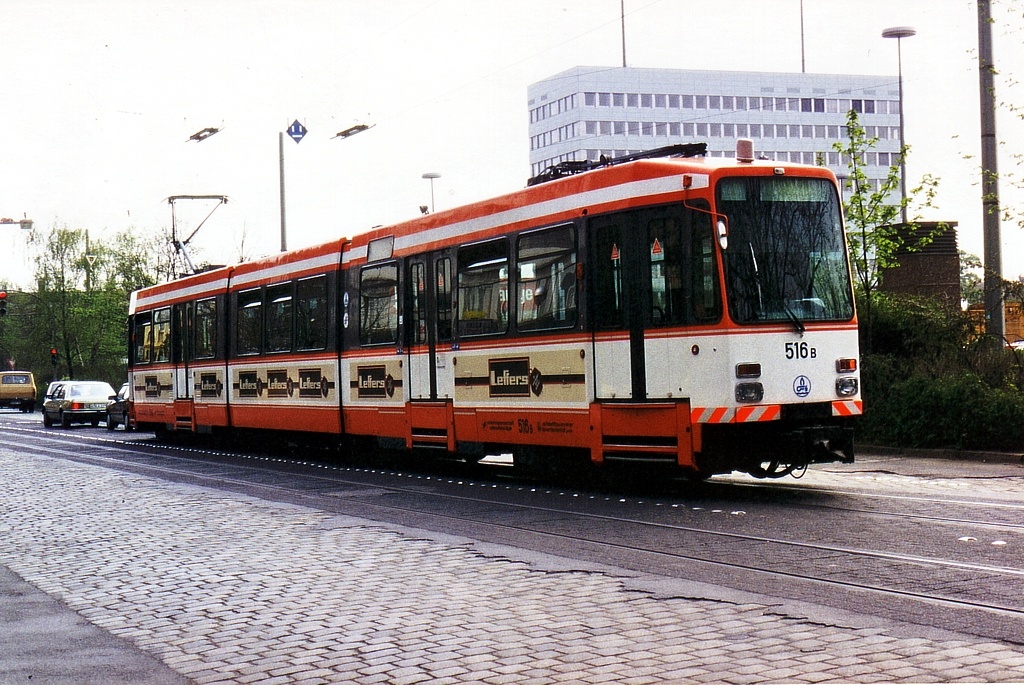
Equipped with folding steps, however, the Bielefeld M8C was already prepared for the future, as Bielefeld upgraded its tram network to high-floor, barrier-free light rail operation in the 1980s. In 1991, the M8C light rail generation experienced the great traffic turnaround in Bielefeld, when the tram moved below the surface with the junction area of the network in the city centre, and from then on was called Stadtbahn. For the next decades, the M8C fleet was the workhorse of Bielefeld’s light rail system.
Decommissioning and sale
From 2011, the new generation of Vamos light rail vehicles (type GTZ8-B) was delivered by Heiterblick. While some of the oldest vehicles (cars 517 – 520) were already decomissioned in 2002 and subsequently scrapped, a total of 14 M8Cs were sold to the MPK Łódź transport authority (Poland) in 2013, where they were completely modernised between 2014 and 2019, equipped with a new vehicle front and with a low-floor centre section. With the delivery of more Vamos light rail vehicles to Bielefeld and new safety regulations regarding dead man’s control, the last M8Cs were decommissioned in Bielefeld between late 2022 and early 2023. At the beginning of 2023, only a few M8C operations could still be observed. The majority of the vehicles will now be scrapped, four M8Cs will go to Łódź to be modernised there as well.
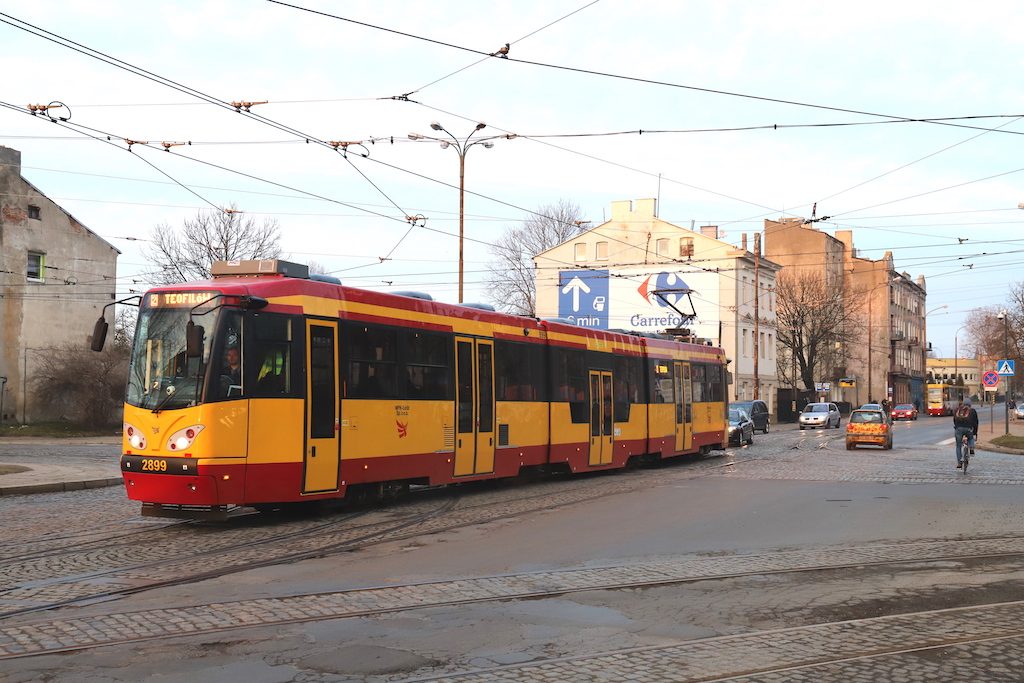
Preservation of two light rail vehicles
With a mileage of around 2.3 million kilometres, M8C 516 was transported away to Łódź for modernisation on 27 October 2021 together with car 538. The constant desire of local tram enthusiasts and people interested in preserving this first Bielefeld M8C as a historic vehicle was launched at the last minute with a Polish tram association. The aim is to preserve two light rail vehicles (cars 516 and 544). Both vehicles are to be preserved in the medium term and saved from modernisation. A replacement will take place by means of a ring exchange, so that the Łódź transport authority will also receive the full number of vehicles purchased.
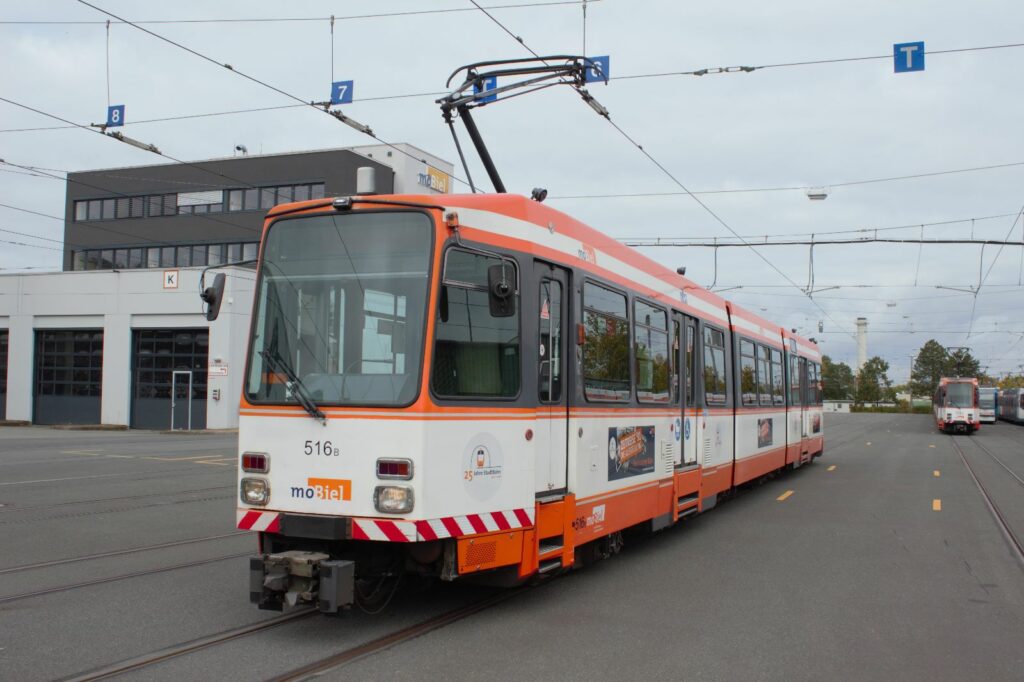
Founding of the association and appeal for donations
At the beginning of 2022, a small community of tram enthusiasts found each other to fulfil the longstanding wish, looking to the role models in other cities, to also establish a community in Bielefeld that documents the topics of local transport from a historical perspective and underpins them with tangible elements. The VhAG “Verkehrshistorische Arbeitsgemeinschaft e. V.” was founded on the occasion of the upcoming complete retirement of the M8C at moBiel. The main goal is to save the soon to be historic M8C vehicles from disappearing and to preserve at least two vehicles for posterity. With united forces, a donation initiative was launched to make the rescue of two M8C trams possible. Donations can be made at the following link (anonymously or by name):
If donations allow, the cars 516 and 544 will be moved to the technical museum “Kujawskie Muzeum Oręża, Nauki i Techniki” in Redecz Krukowy (about halfway between Warsaw and Poznań, north of Łódź) in spring, thanks to the support of Olaf Duczmal, manager for rail vehicles and buses in the museum, and will be made accessible to the public there as a permanent loan in the open exhibition. The next goals after this milestone are to develop ideas to bring the 516 back to Bielefeld in the medium term. Whether the tram will ever return to the tram network to do its rounds as a museum car or to be exhibited in a small technology museum with other projects depends on the possibilities and financial leeway in the future.
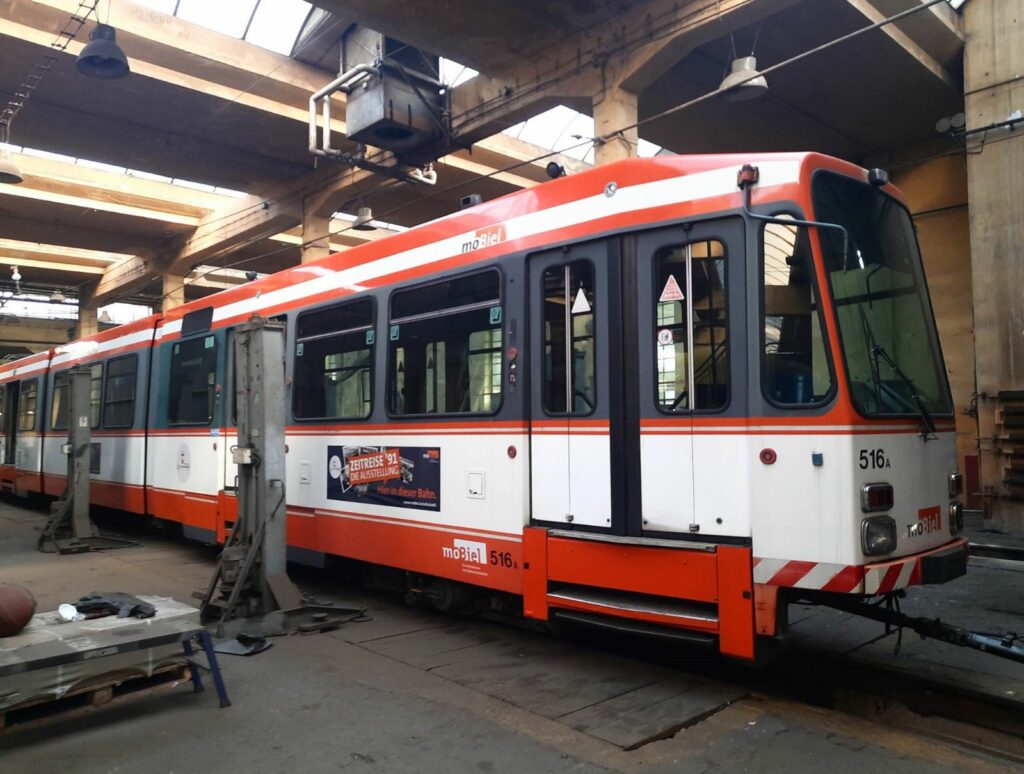
A link to the VhAG Bielefeld can be found here:
https://www.facebook.com/VhAgBielefeld
Authors: VhAG Bielefeld, Dennis Müller, Werner Brückner
22.01.2023
